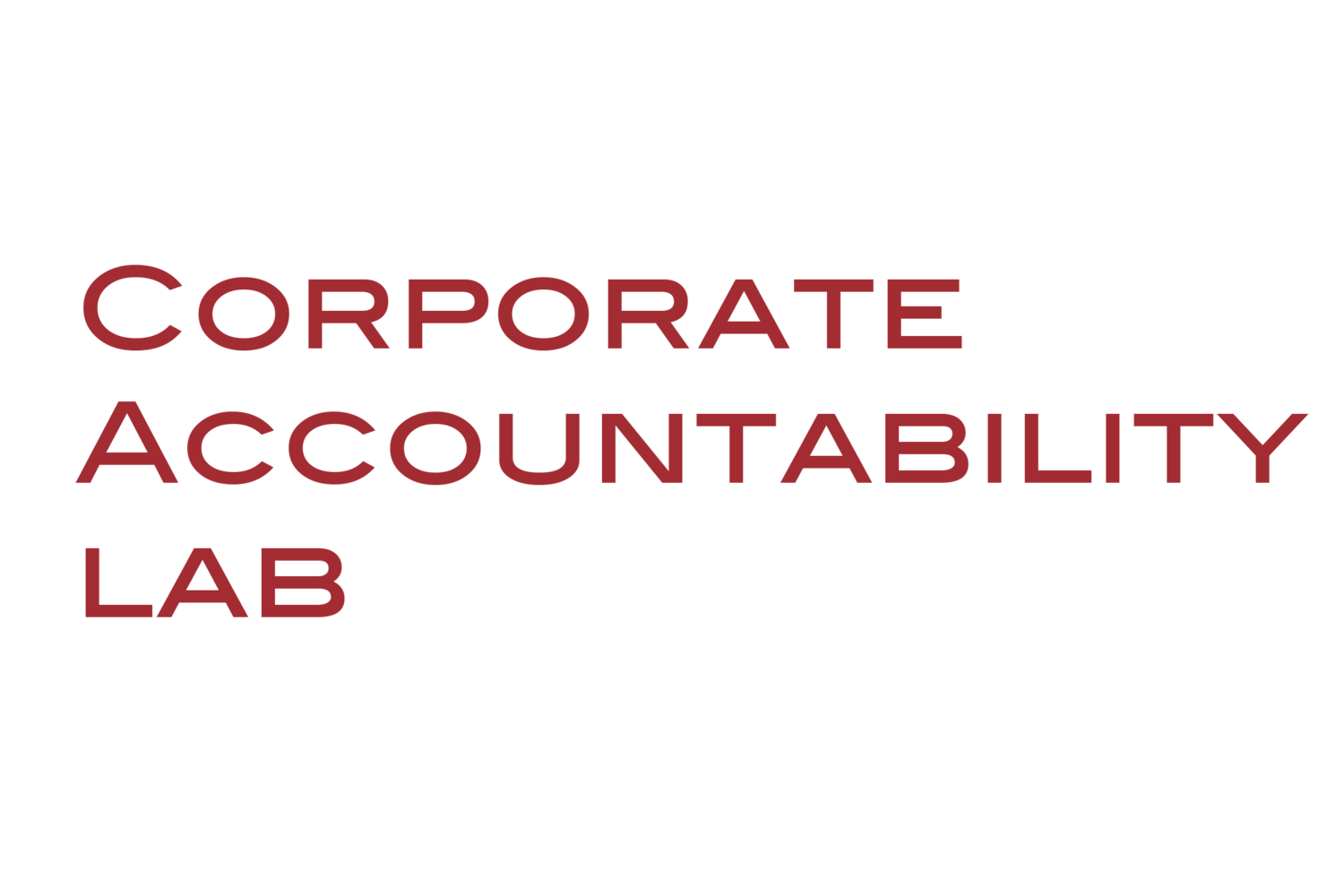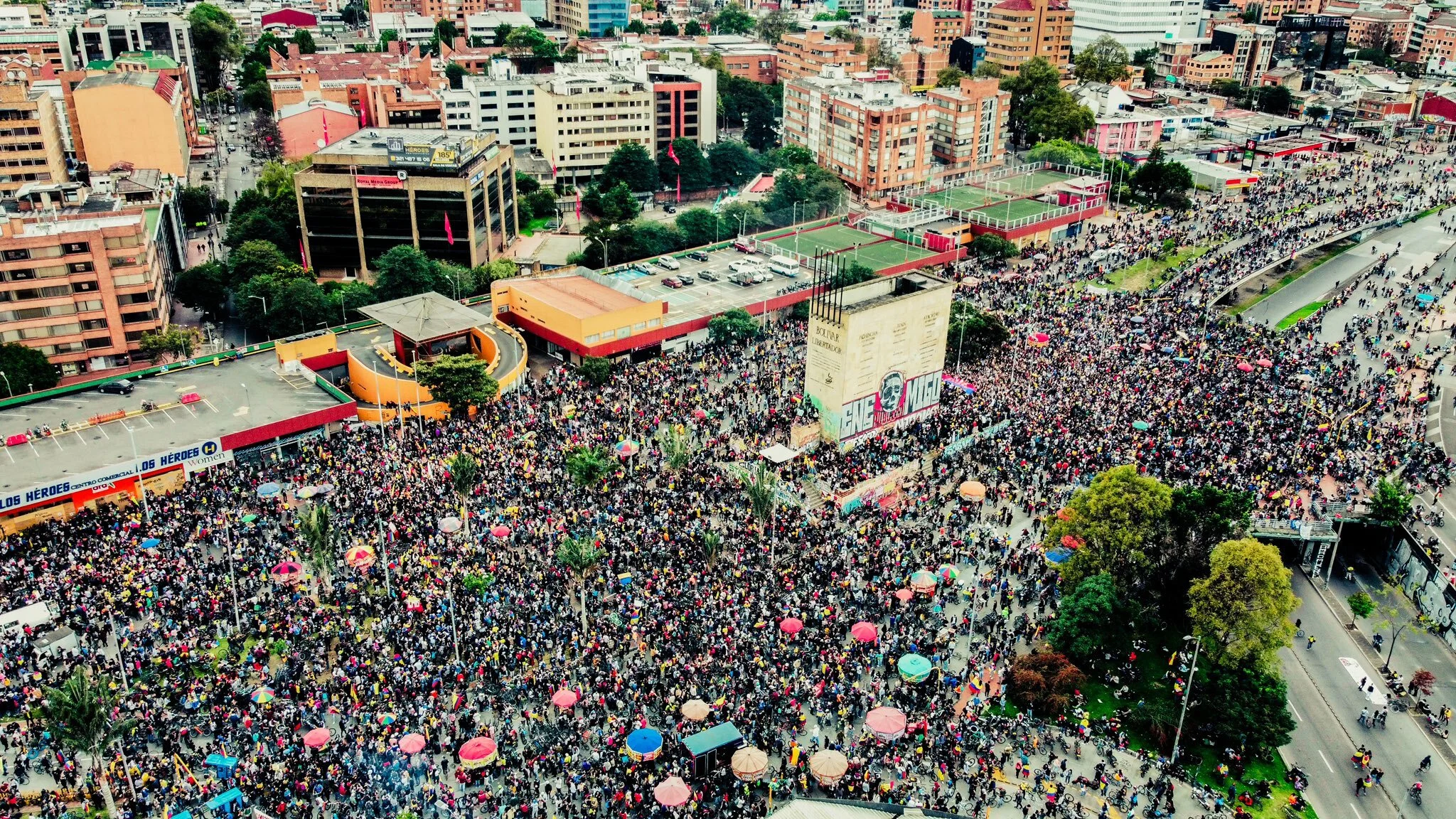Although the Colombian government’s proposed tax reform ignited the protests that started all over the country on April 29, the motives behind the ongoing national strike are diverse. This is why, when President Duque announced that he was going to withdraw the tax reform from Congress five days after protests began, the strike didn’t stop.
This blog post discusses the ongoing Colombian national strike, the repressive way in which police have responded, and the special impact it has had in the city of Cali. It then analyzes the dangerous alliance between corporations and politicians that arises in the midst of national turmoil. Finally, it describes the efforts of protesters and NGOs to put a stop to state repression, have their demands heard, and achieve justice.
A long time coming
In a way, the national strike is a continuation of the protests that started on November 21, 2019 (or “#21N”) and September 9, 2020 (“#9S”), but with the increased discomfort and rage that come after confinement, lack of vaccines, decreased opportunities, and increase in poverty. #21N demonstrated the wide dissatisfaction with President Duque’s response to the massacres of social leaders and the killing of at least 7 children in a Colombian military bombing. #9S showed the national disapproval of police brutality against Javier Ordóñez, a man that, like George Floyd, repeatedly cried “I am choking” while police officers tasered him 12 times.
After a rough pandemic year, around 43% of Colombians found themselves below the poverty line. Being poor in Colombia means that your monthly income is less than $100 USD. Almost half of the population survives on less than $100 USD a month, while many others live with little more than that. Tired of living in the second most unequal country in Latin America, strikers are demonstrating their deep dissatisfaction with the limited options they have for determining their lives and their futures. Thousands of people have reasons to protest –which explains why more than 80% of people between the age of 18 and 35 support the national strike. Strikers are people who were promised peace in 2016 and have seen the government breach the implementation of the Peace Agreement and stand by as hundreds of social leaders and Peace Agreement signers are murdered. Strikers are students, teachers, workers, labor unions, indigenous people, unemployed people, feminists, black movements, musicians, artists, hungry people, poor people, campesinos, high school students, and environmental defenders. Strikers are also community leaders in a country whose government does not protect them, especially when they speak out against corporations.
Police violence
As in the #21N protests where repression tactics ruled, police officers –allegedly obeying the government’s instructions– are again violating the right to protest. The 1991 Colombian Constitution, one of the most protective of the region, fiercely protects the right to engage in public demonstrations. It does so explicitly in Article 37 of the Constitution and alludes to the right in Articles 20, 38, 56 and 107. Further, in 2020, the Supreme Court of Justice declared that public forces had systematically, repeatedly, and persistently acted to debilitate and suppress the #21N protests. Under the Duque administration, the police, including riot police trained to deal with large crowds and dissolve protests (called “ESMAD”), have used excessive force to repress protests. They have violated national and international norms by firing at least 110 gunshots. So far, 2,110 cases of police violence have been reported, including around 15 cases of police sexual violence. A woman in Cali reported on social media that ESMAD agents abused her, and a 17-year old in Popoyán committed suicide after reporting that four policemen sexually abused her. Because of the institutional design of police forces, most of these abuses will be tried in military courts with an overwhelming chance to result in impunity.
On May 3, police allegedly opened fire on peaceful protesters who had come out for a vigil to commemorate others killed in the demonstrations, leaving more than 500 injured. The NGO Temblores received more than 1,000 reports of arbitrary detentions and around 100 people are missing. Reports of disappeared people and illegal arrests --joined with Colombia’s and Latin America’s past history of desaparecidos-- are enough to give anyone the chills.
A focus on Cali
Marginalized and racialized people in Cali, a city that has inherited the racist structure of slave-owner colonizers, have tried unsuccessfully to break with deep inequalities, achieve dignified working conditions, better distribute the profits of the Buenaventura port, receive just compensation, and have decent living conditions. South of Cali, the Northern Cauca region is where most social leaders have been killed since the signing of the Peace Agreement in 2016. In 2020 alone, more than 300 murders were reported. Out of the 39 people that have died because of police violence, 35 died in or near Cali. As Francia Márquez puts it, in much of the Colombian territory, it feels like more people are dying of gun shots than of Covid-19.
Much like Donald Trump on January 6 of this year, former president Álvaro Uribe is using Twitter to promote Neo-Nazi theories, asking “good citizens'' to ally with the police and police to protect the “good citizens'' and their property. Again, like Trump, Uribe was admonished by Twitter. One of the biggest national media outlets described confrontations in Cali as taking place between citizens, on one side, and indigenous people on the other, as if indigenous people were second class citizens or not citizens at all. Indigenous people in protests are caricatured as enemies. If protests have been especially violent on the part of some protesters, the response of the government has been especially repressive.
The dangerous alliance between corporations and politicians
A filtered audio of a GoogleMeet that gathered over a hundred businesspeople and politicians of Centro Democrático, Duque and Uribe’s party, revealed that two congressmen from Centro Democrático suggested pressuring national media to “moderate the narrative” and “place the blame” on unions (like Fecode --the teachers union-- and the United Workers Trade Union) and on the Regional Indigenous Council of Cauca. Others on the call discussed “flipping the discourse” and getting media to say that indigenous people attacked neighborhoods in Cali, not the other way around. One senator advised that, as part of a communications strategy, bosses would ask workers to record a video saying they could lose their jobs if the national strike continues. In the view of one businessman, a strike cannot stop the production of a whole country and the only way to solve it is to use state forces. Another said a good way to threaten President Duque was by saying they will not pay taxes this year if police failed to protect them. This hour-long conversation is just an example of what has already been made public in Colombia: a perverse merger between the interests of corporations and politicians. It provides a glimpse at a brainstorming session of strategies to manipulate the media, antagonize workers, and put obstacles on the right to protest. Like President Duque and former president Uribe, people on this call did not reject excessive police violence. Neither have the Attorney General’s Office, the Ombudsman Office, or the Office of the Procurator-General.
Economic elites and state authorities have used Colombia’s decades-long armed conflict to stigmatize community organizing. Union leaders like Valmore Locarno and Víctor Orcasita, President and Vice-president of Sintramienergética-- the union that represents hundreds of coal workers who work for the US company Drummond in Colombia-- were framed as guerrilleros before paramilitary members killed them in 2001. Because progressive ideas were critical of the state, the state associated them with their go-to lifelong enemy: guerrillas. During the armed conflict, anyone could be framed as a guerrilla sympathizer: human rights defenders, activists, teachers, students, and union leaders. Among other purposes, including disincentivizing and delegitimizing community building and organizing, this discourse served the purpose of justifying state violence. This pattern continues today. Much like previous administrations did to union leaders in the past, the Duque administration has claimed that “terrorists” from dissident rebel groups are driving the protests. This creates antagonism, fear, and flashbacks to traumatic events of a nation with a long history of civil conflict. The Peace Agreement was supposed to open new channels of participation. Instead, strikers have faced enhanced police repression.
A cocktail of laws and demands
Protesters and NGOs have used all sorts of formal and informal channels to ask for help. Human rights abuses are so widespread that some NGOs have started asking people to strike in the day and go home at night because there are no guarantees of safety. From actively reporting on social media with what Alejandra Azuero calls counterforensic knowledge, to filing requests in international fora, strikers and human rights defenders are calling on the international community to watch what is happening in Colombia.
At the national level, protesters demand that the government comply with the 1991 Constitution, the Supreme Court of Justice’s 2020 judgment that protects the right to protest, and establish a negotiation table between the government and the National Strike Committee. International demands include several requests to UN agencies; a petition to the Inter American Court of Human Rights (IACHR) to visit Colombia and verify the alleged human rights abuses; a call for the US to enforce the Leahy Act, defund Colombia’s security forces --which it has funded for years--, suspend sales of equipment, training, and services to the ESMAD, and support Colombia by providing vaccines against Covid-19. The NGO CAJAR also sent a communication to the International Criminal Court flagging the systemic nature of state repression of protests since 2013.
What’s next
At the time of publishing this post, the national strike is ongoing. State violence must cease and police forces must disclose the locations of disappeared persons, Uribe and his sympathizers should stop engaging in hate speech, and politicians and businesspeople should stop co-opting the narrative to serve their own interests. As Yolanda Reyes says, Duque’s administration can’t be “trapped in a circle of mechanic responses without understanding the difference between a war and a massive national protest.” For the national strike to end, the government must hear its demands and the demands of #21N and #9S protesters.
Some scholars are proposing a multilevel and multifocused dialogue between the very diverse set of protesters. Because strikers have different claims and come from all over the country, it would be a mistake to call for a negotiation centered only in Bogotá. Several NGOs are asking the IACHR and the Office of the UN High Commissioner for Human Rights for a prompt report that describes the human rights abuses during the national strike and gives recommendations to the government to ensure non-repetition. But the bold resemblance between conflict days and today’s governmental repression makes “non-repetition” an essential pillar of the transitional justice process that Colombia is struggling through, seem unachievable. Without state authorities speaking the truth, the strike won’t stop.
Isabella Ariza is a Colombian attorney and a Legal Fellow at CAL.
Photo courtesy of @juanografoo (Twitter and Instagram)


